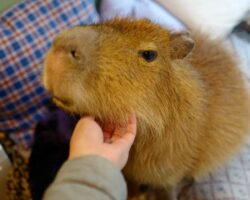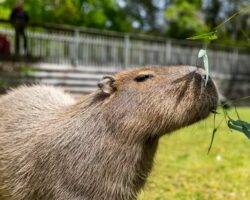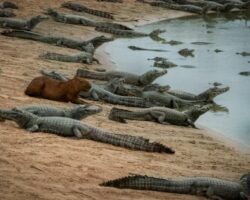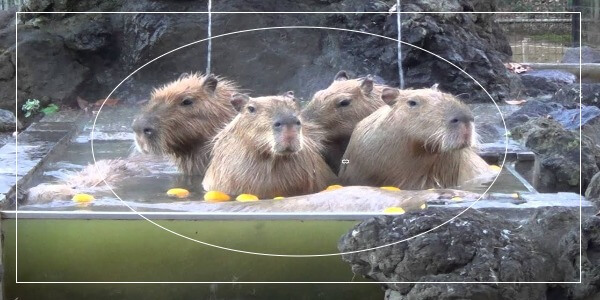Perhaps, you may have come across photos of a capybara and crocodile together. Like you, I am surprised that the capybara is unperturbed to have a crocodile around it. Both animals are unlikely friends and they seem to be at peace with each other.
Capybara are one of the friendliest animals and they hang around with several animals, including crocodiles, alligators, and caimans. Many have wondered why the alligators don’t attack and eat capybaras.
Obviously, crocodiles are carnivores and are ready to make a juicy meal out of any animal, including rodents. The capybara, on the other hand, has a large size, making them a succulent, sumptuous, and satisfying meal for the crocs.
But when both animals get to meet each other, they stay together, and one doesn’t get to attack the other. This brings up the question: why don’t crocodiles eat capybaras?
It is difficult to tell why the crocodiles don’t eat capybaras. However, it is believed that the large size of the capybara makes it too big for the croc to swallow. Also, the presence of crocodiles near a capybara will deter bigger predators such as jaguars and anacondas from hunting the rodent.
These unlikely friends get to chill and hang out with each other. This post reveals more insights and details on the relationship between the capybara and the crocodile.
What Is a Capybara?

If you already know what a capybara is, permit me to provide a brief description of the animal for people who don’t. Capybaras are wild animals that you don’t hear all the time. They are rodents and are closely related to the guinea pigs and chinchillas.
The capybara is the largest rodent on the planet; they can measure around 2 feet tall, 4 feet long, and weigh up to 150 lbs. On average, a full-grown capybara can weigh up to 100 lbs, making them bigger than small dogs.
The capybara is an interesting animal. Despite coming from the wild, they have been taken into many homes due to their social, calm, and friendly nature. These giant rodents come from South America but have been spotted in several parts of the United States, including Florida, Michigan, Pennsylvania, New York, and other parts of the world.
The capybara enjoys staying in groups made up of 10 or 20 other capybaras. It is difficult to find a capybara staying alone in the wild. Capybaras do not enjoy loneliness, and sometimes, their groups, known as herds, may contain up to 100 members.
They live in the wild, typically near bodies of water such as marshes, lakes, streams, swamps, etc. The capybara is an amphibious mammal, they are excellent runners and strong swimmers. The capybara has a distinct ability to dive as deep as 4 feet below the water and hold their breath underwater for up to five minutes.
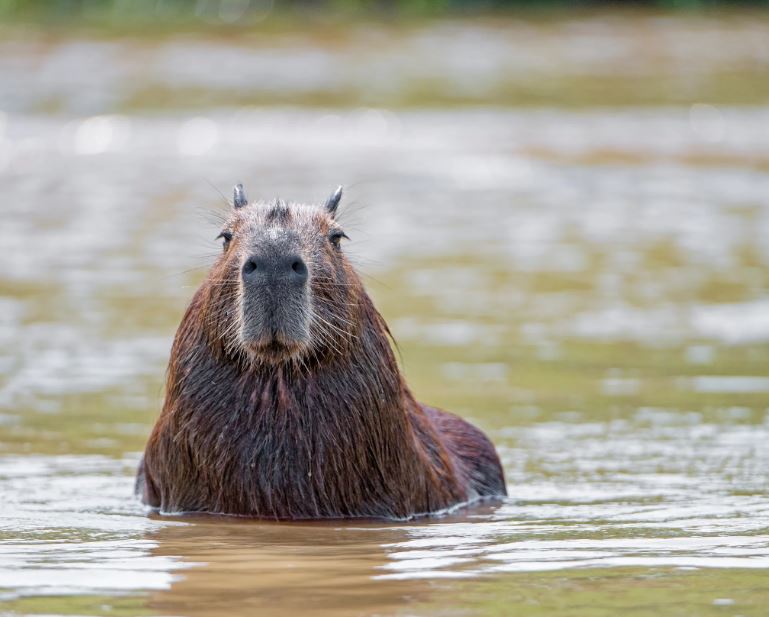
Capybaras are herbivores; they feed on grasses, fresh vegetation, and fruits, and go underwater in search of aquatic plants. While the capybaras aren’t dangerous wild animals, they are hunted by animals and humans for their hides, meat, and grease from their fatty skin.
Now that you know what a capybara is, we can proceed to know why the alligators and crocodiles don’t attack the capybaras or eat them.
Why Crocodiles Don’t Eat Capybaras?
The unlikely friendship duo of the capybara and crocodile have shown how possible it is for certain animals in the wild to co-exist and live in harmony.
Several reasons suggest why the crocodile befriends the capybara and chooses not to eat the rodent. Here are some of them:
1. There Are Varieties of Caimans
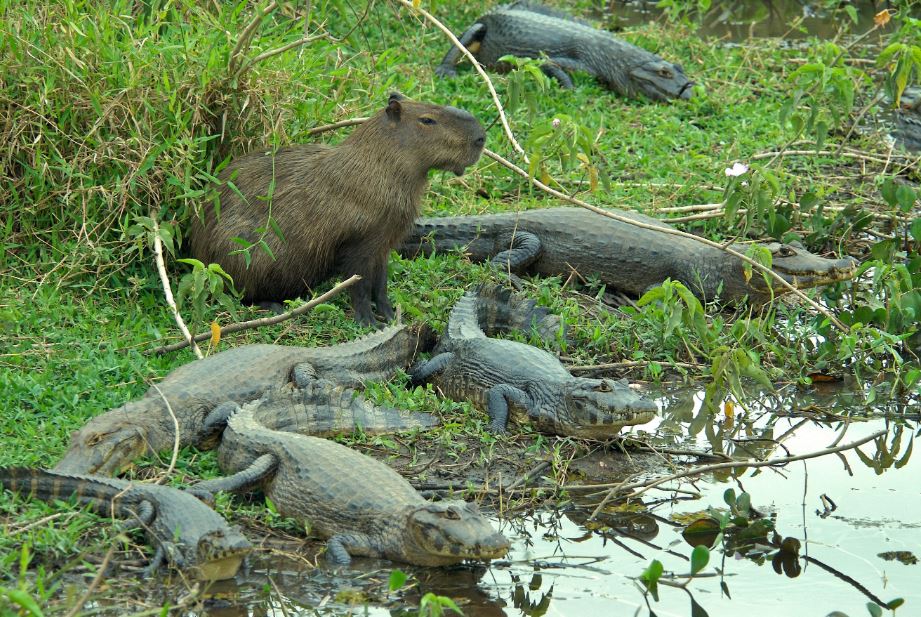
As a predator, the caiman is one of the animals that eats the capybara. Still, there are varieties of reptiles in the crocodilian family and not all alligators eat the capybara. The only alligator known to prey on the capybara is the American alligator.
The American alligator is known to occupy areas in North Carolina and Texas and capybaras, on the other hand, come from South America. It is difficult for the American alligator and capybara to stumble upon each other in the wild due to the range of their natural habitat.
The physical distance between both animals is one of the reasons why we have yet to hear reports of prowling alligators eating capybaras in the wild.
2. They Are Never Hungry
One of the driving forces in life is hunger. When an animal is on the move, it is definitely looking for its next meal. Crocodiles and alligators in the wild tend to hunt their prey. These reptiles can feed on anything from rodents to ducklings or even their own offspring.
Most animals in captivity are well-fed, so they do not have to hunt for prey but this is different in the wild. Animals in the wild are after their own survival and will keep searching till they find prey to fill their bellies.
A crocodile in captivity or in the wild wouldn’t consider eating a capybara if it is not hungry.
3. They Are Hard To Swallow
Capybaras have a thick, dry skin and have a lot of weight. Though their large size means an appetizing, tasty meal for any predator, they are not easy to consume.
Capybaras have thick, oily, and fatty skin with sharp, short hair and long teeth. They are not easy to swallow. Several animals such as pelicans have found it difficult to eat a capybara. Alligators, for instance, have no molars, making it difficult for them to crush and grind sizable prey like the capybara.

The weight and size of any capybara will be too big for crocodiles to swallow. These large water hogs have a heavy barrel-shaped body, making it extremely hard for the crocodile to consume. Apart from the capybara, crocodilians typically stay away from attacking or eating animals with stocky or barrel-shaped bodies.
Another reason why crocodiles don’t eat capybaras is that they have a unique digestive system that digests every part of the swallowed food, including the bones. The crocodile prefers eating prey and small animals that are easy to swallow and digest.
The adult alligator feeds on fish, frogs, turtles, snakes, birds, and small mammals. Conversely, juvenile alligators feast on amphibians, insects, and some invertebrates. Some crocodilians can attack and consume humans but it is rare for the animal to eat human beings because not all humans are easy to consume.
The alligator is only successful in swallowing minors, mostly little children. If it should attack an adult human, it may only be successful in chewing off and swallowing a certain part of their body such as their arm or leg. Many animals eaten by crocodilians are typically easy to consume but not the capybara.
When a crocodile wants to take down prey such as a deer, an antelope, or a buffalo, they drag the animal into the water, try to drown it, and swallow it. The crocodile won’t waste its time attacking the capybara because the capybara is a semi-aquatic animal with short webbed feet.
The capybara won’t drown if submerged in water because they can hold their breath in water for over five minutes. Rather than attacking the capybara, the crocodile will hunt for other small mammals.
Although the capybara remains friendly, it can get aggressive when provoked. When this happens, the capybara will charge at their attacker and even bite them with their large teeth. These rodents can defend themselves when confronted by predators.
Many crocodiles are not ready to struggle with a capybara, so they rather wait for another prey than feed on the capybara. Some crocodiles may eat baby capybaras but won’t risk battling with an adult one.
4. They Need Good Company
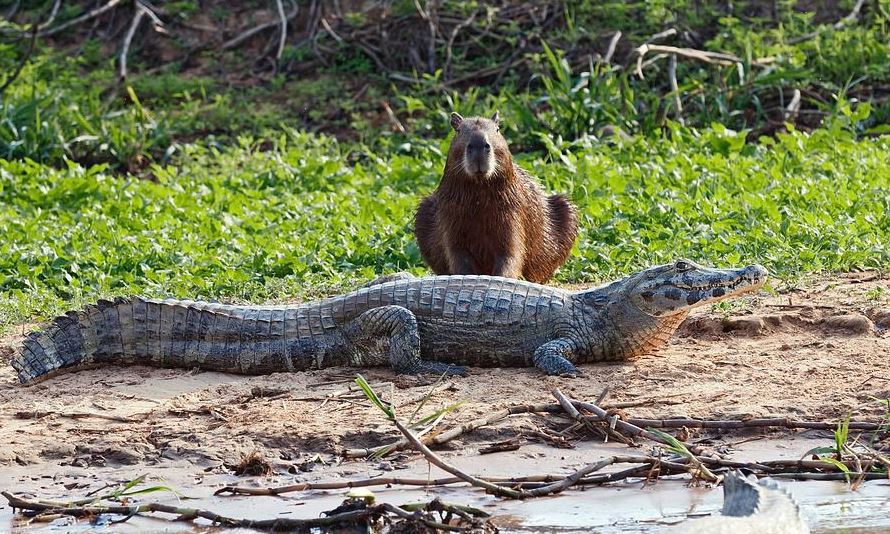
Most animals, especially the isolated and solitary ones, get lonely very easily. Animals in captivity can get bored if they have no company. Some animals get aggressive to the point of self-destruction when they do not enjoy the company of other animals.
A crocodile who is tired of living a solitary life in confinement will enjoy the company of a chilly, calm pal such as the capybara around it. It is common to see alligators and crocodiles pretty close to one another, enjoying each other’s company.
Undoubtedly, the capybaras are social and friendly animals, and they find it easy to hang out with several animals, including their fellow capybaras and other animals in the wild.
The capybaras take naps, sometimes in water at midday when the sun hits its highest point. Similarly, the crocodiles also enjoy their siesta at the same time around riverbanks. Most crocodiles will fight other crocodilians for several reasons, including tussle for love, territory, etc but a crocodile will never fight a capybara but will like to keep them company.
Having a buddy as the crocodile is a bonus for the capybara and it helps defend them from other dangerous predators that may want to prey on them. The capybara typically raises an alarm and uses different sounds and noises to communicate to the rest of the group when there is danger.
What Eats The Capybara?
Since crocodiles don’t eat capybaras, you may want to know the animals that attack and eat capybaras.
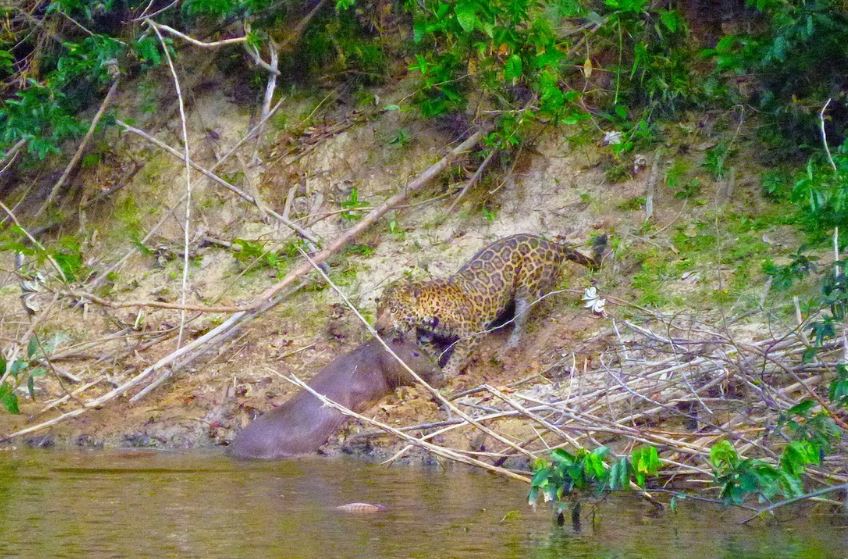
Although the capybara is a docile and friendly animal, it is prey to several predators in the wild. Capybaras are hunted and eaten by predators such as harpy eagles, jaguars, pumas, ocelots, cougars, anacondas, and even vultures.
Sadly, the biggest predators of the capybara could be humans because they hunt rodents for their meat and skin.
Frequently Asked Questions
Can crocodiles eat capybaras?
Crocodiles do not eat capybaras. The Crocodiles do not have the molars and dentition to break up and grind the flesh of their prey, so they typically swallow parts of their prey after taking it down. The capybara is a large rodent with a thick skin, which will be difficult for the reptile to swallow.
Why Do Capybaras Chill With Crocodiles and Alligators?
The crocodilians and capybaras enjoy each other’s company for different reasons. First, they enjoy the water; they take naps in the water or riverbank, and they don’t attack each other. Also, the capybara is a playful animal, which makes it a great buddy for crocodiles.
Since crocodiles don’t eat the capybara, what then eats the capybara?
The capybara is eaten by several animals such as anacondas, jaguars, caimans, ocelots, etc.
Conclusion
I am not insinuating that the crocodilians won’t consider eating a capybara. However, several video footage and photos have shown capybaras enjoying the company of dangerous-looking crocodiles. After seeing this, one would want to know why the capybara is confident to enjoy the company of a group of caimans.

Alligators shy away from eating capybaras due to their enormous size. They don’t have molars, making it difficult for them to chew the rodents. Therefore, they have no choice other than to swallow their prey.
Swallowing a prey as big as the capybara is a big task. Even if a crocodilian takes down an adult capybara, it may find it pretty hard to swallow it straight up.
Rather, it will swallow the rodent in parts. And even if it decides to swallow the capybara, it may not find any part to swallow, as the capybara has small legs, which cannot be swallowed in parts. So, the crocodiles do not see the capybara as a threat and the capybara do not see the crocodilians as a threat.
When both animals get to meet each other, they seem to coexist in harmony and tranquility. Capybaras are chill to be with and they respect the territory of the crocodilians. Both capybaras and crocodiles are semi-aquatic animals but they do not compete for anything.
Capybaras are chill and friendly with any animal that will befriend them. As dangerous as the crocodile is, the capybara is at peace with it. It’s not rare to see the capybara riding on the backs of a crocodile while in the water.

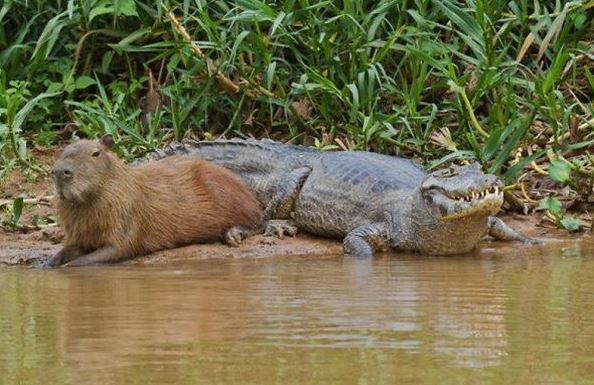
![Capybara Meat And Its Culinary Uses - [Every You Should Know] Capybara Meat & Culinary Uses](https://capybaratips.com/wp-content/uploads/2023/03/Capybara-meat-250x200.webp)
